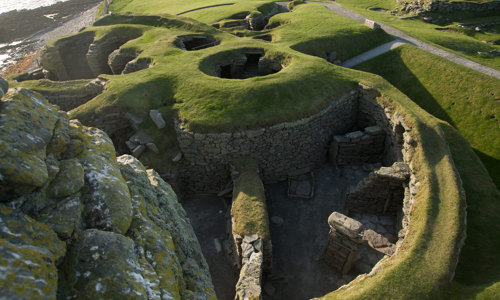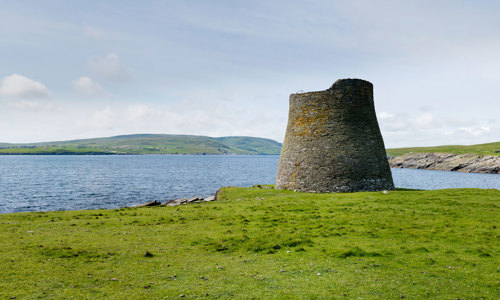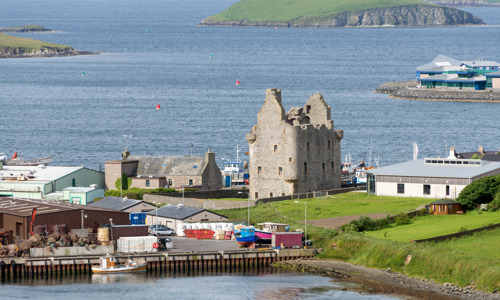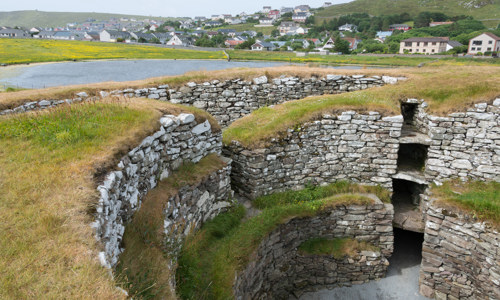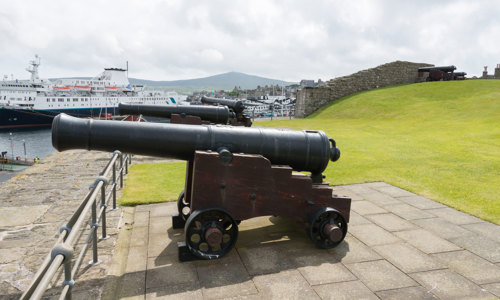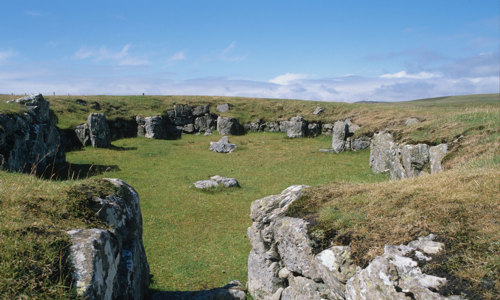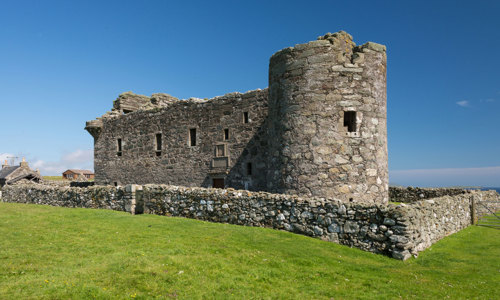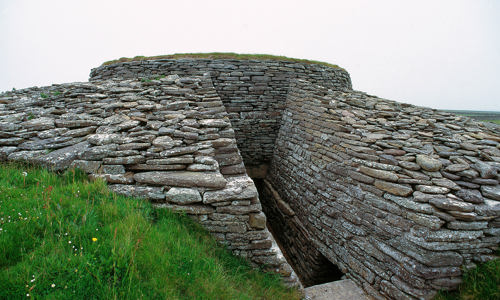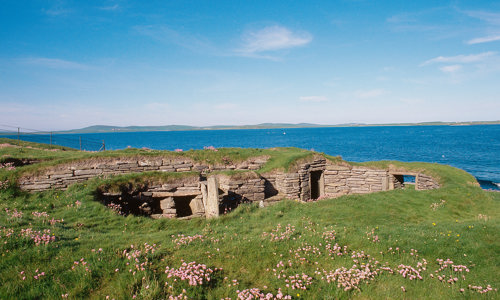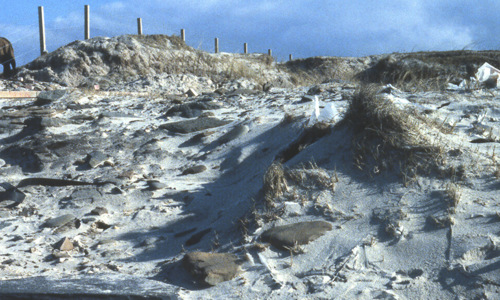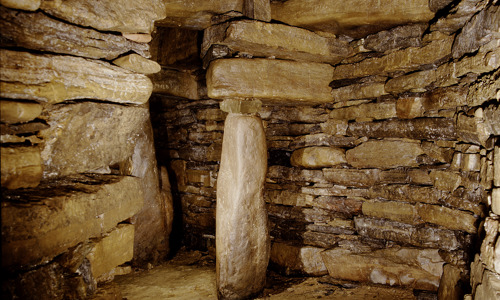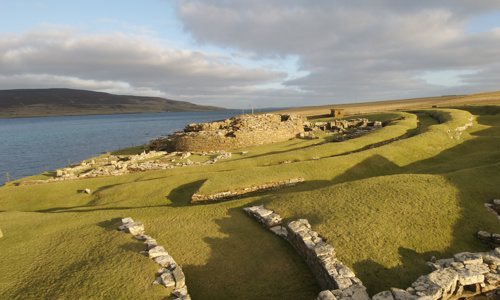History
A visit to the Ness of Burgi is well worth the walk – a clamber over rocks and a narrow causeway in the far south of mainland Shetland.
The site’s dominated by the blockhouse. This is a solid, drystone structure, entered by a low, covered passage forcing a stooping arrival.
Inside the blockhouse are:
- two oval, corbelled cells or chambers either side the entrances
- the ruins of a third cell, entered from the passage, like a guard chamber
- door checks and bar holes in the entrance way, indicating the position of a door
We don’t know why the blockhouse was built or how it was used, but it would certainly have been an impressive structure and is very well defended.
Only one side is land-facing – the rest of the site is bordered by steep cliffs plunging into the sea. On the landward side the fort is defended by two rock-cut ditches on either side of a broad rampart, which spans the neck of the promontory.
There’s another, larger blockhouse at Clickimin in Lerwick, standing in front of the broch tower. There are similarities between the design and form of blockhouses and brochs. Based on these similarities, and the type of pottery found at these sites, they are thought to be Iron Age in date and roughly contemporary with brochs.


